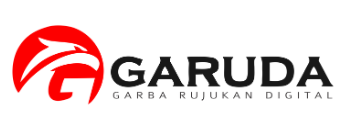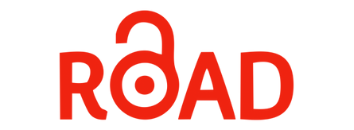Innovation as Guided Coevolution: The Trend Micro Case (1998 – 2005)
DOI:
https://doi.org/10.24002/kinerja.v24i1.3227Abstract
Innovation is considered crucial for firms to compete effectively. The extant research on innovation has provided significant insights, but, however, the majority examined innovation in the context of technology. Only a few exceptions have explored how social and behavioral factors influence firms in the innovation processes. Based on the coevolution perspective, this study examines innovation process of a software firm participating in the ever-changing information security software industry. We focused on how the firm guided its offerings to coevolve with new technologies and relevant changes among different groups of human actors. Our data reveals that the firm developed different offerings in different periods to cope with the changing driving forces—technologies, users, and hackers—in each period. Effectively identifying the driving forces and guided its offerings to coevolve with them, the firm successfully sustained its competitive advantage in the period characterized with turbulence in the environment.
Keywords: innovation, coevolution, software, high-tech
References
Backhouse, J. & G. Dhillon. 1995. Managing computer crime: A research outlook. Computers & Security 14, pp. 645–51.
Birkinshaw, J. 2000. Entrepreneurship in the Global Firm. London: Sage Publications.
Boulanger, A. 1998. Catapults and grappling hooks: The tools and techniques on information warfare. IBM Systems Journal 37, pp. 106–14.
Brennan, L.L. & A.H. Rubenstein. 1995. Applications of groupware in organizational learning. In Trends in Organizational Behavior, Vol. 2, ed. C.L. Cooper and D.M Rousseau, Chichester: John Wiley & Sons, pp. 37-49.
Burke, B.E. 2004. Worldwide antivirus 2004-2008 forecast and 2003 vendor shares. In IDC Market Analysis, Framingham: IDC.
Burke, B.E., C.J. Kolodgy & Crotty, J. 2007. Worldwide secure content and threat management 2007-2011 forecast and 2006 vendor shares: 1 + 1 = 4. In IDC Market Analysis, Framingham: IDC.
Christensen, C.M. 1997. The Innovator’s Dilemma. Boston: Harvard Business School Press.
Davis, F.D. 1986. A technology acceptance model for empirically testing new end-user information systems: theory and result. Boston: Sloan School of Management, MIT.
Dewar, R.D. & J.E. Dutton. 1986. The adoption of radical and incremental innovations: an empirical analysis. Management Science 32, pp. 1422–33.
Dijksterhuis, M.S., F.A.J. Van den Bosch & H.W. Volberda. 1999. Where do new organizational forms come from? Management logics as a source of coevolution. Organization Science 10, pp. 569–82.
Ettlie, J.E., W.P. Bridges & O’Keefe, R.D. 1984. Organizational strategy and structural differences for radical vs. incremental innovation. Management Science 30, pp. 682–95.
Freeman, C. 1982. The economics of industrial innovation, 2nd ed. Cambridge: MIT Press.
Hamel, G. 2000. Leading the Revolution. Boston: Harvard Business School Press.
Henderson, R. & K. Clark. 1990. Architectural innovation: the reconfiguration of existing product technologies and the failure of established firms. Administrative Science Quarterly 35, pp. 9–30.
Hitt, M.A., R.D. Nixon, P.G. Clifford, and K.P. Coyne. 1999. The development and use of strategic resources. In Dynamic Strategic Resources, ed. M.A. Hitt, P.G. Clifford, R.D. Nixon, and K.P. Coyne. Chichester: Wiley.
ICSA. 1997. The Annual Virus Prevalence Survey. Mechanicsburg: International Computer Security Association Content Security Labs.
ICSA. 1998. The Annual Virus Prevalence Survey. Mechanicsburg: International Computer Security Association Content Security Labs.
ICSA. 2002. ICSA Labs 7th Annual Computer Virus Prevalence Survey 2001. Mechanicsburg: International Computer Security Association Content Security Labs.
ICSA. 2005. ICSA Labs 10th Annual Virus Prevalence Survey. Mechanicsburg: International Computer Security Association Content Security Labs.
Ireland, R.D. and M.A. Hitt. 1999. Achieving and maintaining strategic competitiveness in the 21st century: the role of strategic leadership. Academy of Management Executive 13, pp. 43–57.
Lewin, H. W. and H.W. Volberda. 1999. Prolegomena on coevolution: A framework for research on strategy and new organizational forms. Organization Science 10, pp. 519–34.
Lyons, D. 1998. The decline and fall of Lotus. Forbes 162, pp. 106–107.
MacKenzie, D. and J. Wajcman. 1985. The Social Shaping of Technology: How the Refrigerator Got its Hum. Milton Keynes: Open University Press.
Mark, G. 1993. Guarding all servers. Network World 10: 59–61.
McGee, K.G. 2004. Heads Up: How to Anticipate Business Surprises and Seize Opportunities First. Boston: Harvard Business School Press.
Moschovitis, C. J. P., H. Poole, T. Schuyler, and T.M. Senft. 1999. History of the Internet: A Chronology, 1843 to the Present. Santa Barbara: ABC-Clio Inc.
Podolny, J.M. and T.E. Stuart, T.E. 1995. A role-based ecology of technological change. American Journal of Sociology 100, pp. 224–60.
Richardson, R. 2003. 2003 CSI/FBI Computer Crime and Security Survey. Available at http://www.gocsi.com.
Rogers, E. M. 1995. Diffusion of Innovations, 4th ed. New York: Free Press.
Schumpeter, J. A. 1934. The Theory of Economic Development. Cambridge: Harvard University Press.
Strauss A. & J. Corbin. 1990. Basics of Qualitative Research. Newbury Park: Sage.
Sundbo, J. 1998. The Theory of Innovation. Cheltenham: Edward Elgar Publishing.
Sundbo, J. 2001. The Strategic Management of Innovation. Cheltenham: Edward Elgar Publishing.
Tushman, M. & C. O’Reilly III. 1997. Winning Through Innovation: A Practical Guide to Leading Organisational Change and Renewal. Boston: Harvard Business School Press.
Tushman, M.L. & P. Anderson. 1986. Technological discontinuities and organizational environments. Administrative Science Quarterly 31, pp. 439–650.
Utterback, J. & W. Abernathy. 1975. A dynamic model of process and product innovation. Omega 13, pp. 639–656.
Vance, M. 1996. Firewalls to offer viral protection. Datamation 42, pp.11–12.
Venkatesh, V. and F.D. Davis. 2000. A theoretical extension of the technology acceptance model: four longitudinal field studies. Management Science 46, pp.186–204.
Van Maanen, J. 1979. Reclaiming qualitative methods for organizational research: a preface. Administrative Science Quarterly 2, pp. 520–527.
Williams, R. & D. Edge. 1999. The social shaping of technology. Research Policy 25, pp. 865–899.
Yin, R. 1983. Case Study Research: Design and Method. Newbury Park: Sage.














